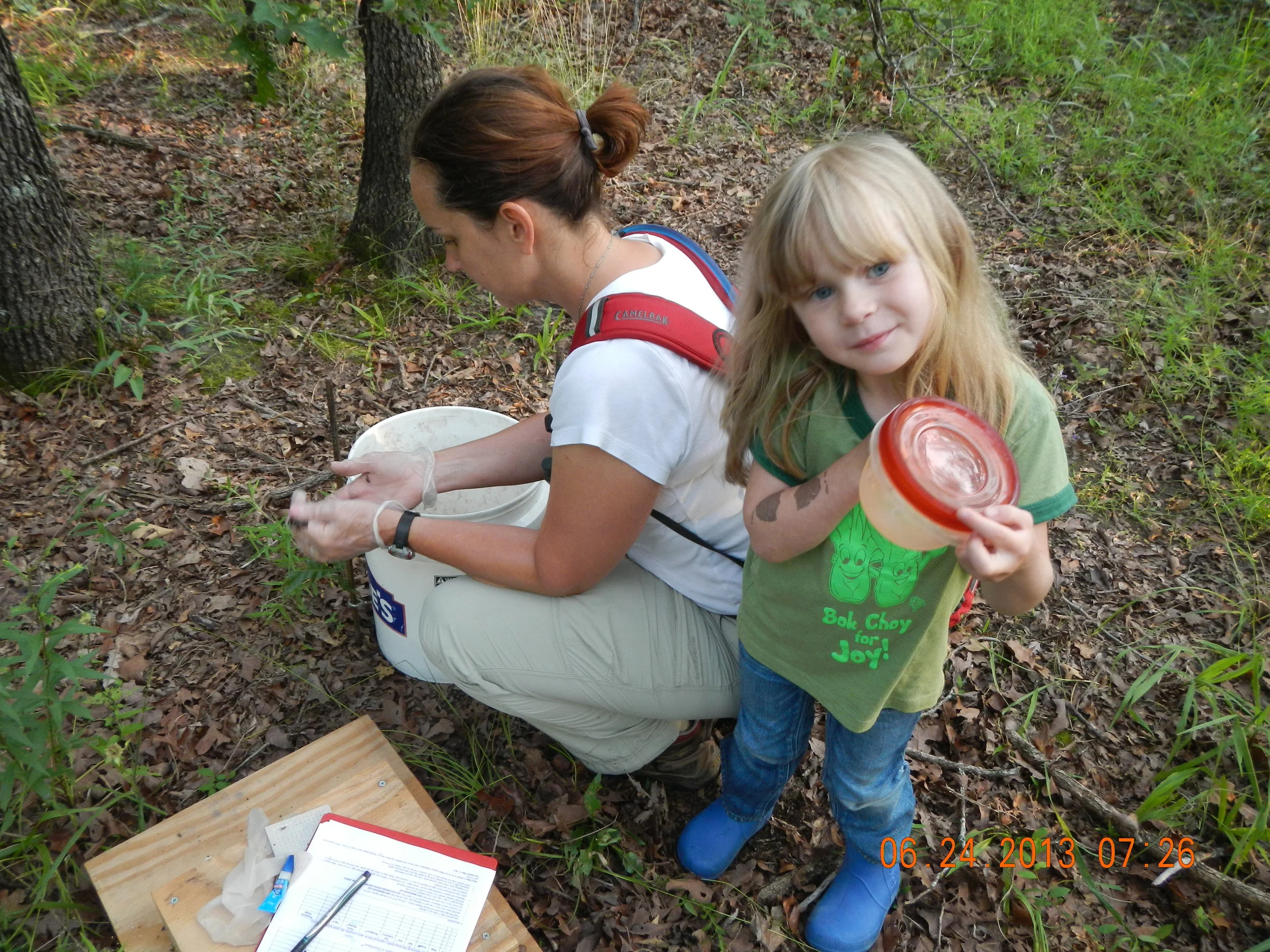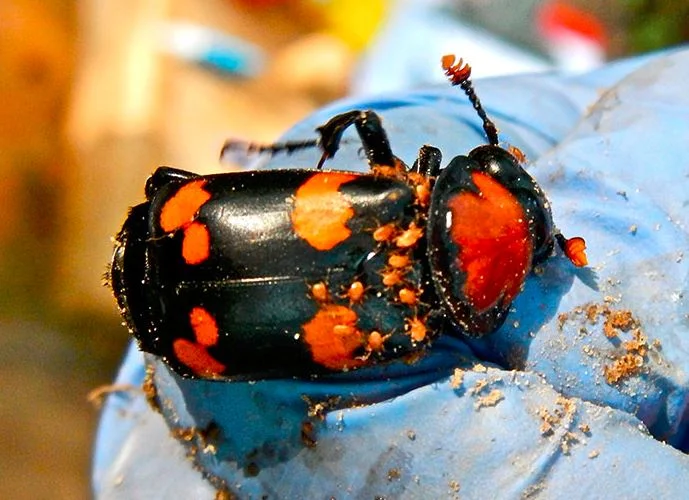HOW TO TRAP AN AMERICAN BURYING BEETLE OR HOW I SPEND MY SUMMERS
I used to be under the delusion that field biologists led a glamourous existence filled with twittering birds, flittering butterflies, and beautiful vistas (something like the movie scene where Snow White’s lilting song attracts the little birds…cue Disney soundtrack). Here is my reality.
First off, you should not try this at home. You must have a federal permit from the U.S. Fish and Wildlife Service and state permits to do what I’m about to describe. Yes, I have all of those!
American burying beetles (ABBs) are a federally endangered beetle so before a large construction project can begin in an area where ABBs might occur, you must find out if the beetles are present. You could go searching for them like a needle in a haystack or you can trap them. I trap them. Since ABBs feed on dead things, I attract them into traps baited with rotten chicken gizzards (stink bait). I buy massive numbers of chicken gizzards at the grocery store and place them into large plastic containers. These get put into the back yard to “ripen” in the sun for at least three days (no the neighbors haven’t complained yet). Once the stink bait is ready, then I can set the traps. The trap location is determined by the project I’m working on. Sometimes I must hike my gear (and stink bait) a mile or more into the “wilderness”. Sometimes I get to 4-wheel into sites. Once I arrive at the site, the trap gets placed and the bait is put into a container with a series of aerated holes so the bait can permeate out, attracting ABBs for about a ½ mile radius area. The beetles can easily dry out and die (desiccate) or get to hot and die. So, I put moist soil, a wet sponge, and a dead rat in the trap. The dead rat is for the ABBs to nibble on so they don’t beat the crap out of each other. Oddly enough I order frozen rats in the mail. There are companies that provide frozen rats for zoos and pet stores (generally to feed snakes). Sometimes I even get coupons! This is both exciting (I love a good deal) and frightening – I buy ratsicles. The ABBs are nocturnal and will come looking for those delightful stink bait treats in my trap. They fall in and discover the joys of a nice moist soil and a rat snack. Because they can desiccate or heat up and die, I must check all the traps before 10:00 a.m. when temperatures in the summer get into the 80s. This means my days start early before the sun comes up. I start my workdays with a lot of coffee and a head lamp. Sometimes I feel like a bad ass biologist checking traps by the light of my head lamp. Other times my imagination gets the best of me and I freak myself out. I hear strange snorts which I imagine to be a herd of feral pigs hunting me down with a taste for “biologist – rare”. In the dark, I also get attacked by trees that want to steal my hat. I get snagged in unseen briars. I go face first into spider webs (why are they always at head high?1?) and spend a few minutes doing the cootie dance, hopping around and wiping furiously at my head. Once I get to my traps, I need to run my hands through all the dirt and decaying rat to find all of the beetles. ABBs are about the size of your thumb and they do bite. I wear latex gloves, but it still hurts. By the time my day is done I smell like a potpourri of rotten chicken gizzards, sunscreen, bug spray, sweat, and cow poop (I walk through a lot of pastures). I wish blogs were scratch and sniff so you could get the real experience! Where is that darned Disney soundtrack?


